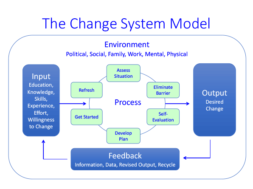
The Selective use of Data to Demonize For-Profit Colleges and Distort Their Contribution to Higher Education
By Henry Herzing, Ph.D.(hc), MBA, MSEE, President, Herzing College, Co-founder and Chancellor Emeritus, Herzing University
A recent release from the Association of Private Sector Colleges and Universities (APSCU) highlighted that the private sector of higher education accounted for 16 percent of the degrees and certificates awarded in the country.
This caused me to opine how interesting it is that the for-profit sector has only 12 percent of the higher education (fall) enrollment, is attacked for alleged poor completion rates and yet awards a disproportional percentage of degrees and certificates.
That is truly magical!
It also revived my concern for an often repeated statement of Senator Harkin made in September 2010, that laid out his attack on for-profit colleges:
“For-profit colleges account for only 10 percent of students enrolled in higher education, but represent 23 percent of the federal grants and loans and 44 percent of the defaults.”
By underestimating the number of students and the intensity of education at private sector colleges (almost always year-round at for-profit, rather than just two semesters a year as the rest of higher education) and referring to the percentage of defaults rather than the dollar value of the defaults, which should be the concern of taxpayers, he was able to demonize for-profit colleges and distort their contribution to higher education in one sentence. Regrettably, the statement resonated unchallenged by the press and took on a life of its own.
At the time I decried the misrepresentation of the number and percentage of students the for-profit sector trained by the 10 percent statistic (actually 12 percent), which represented only the percentage of private sector students attending in the fall compared to all of higher education. The 12 percent understates the “quantity” of higher education delivered by the private sector because of the intensity of its educational model, three semesters a year versus typically two in the rest of higher education. And the 12 percent understates the number of students educated by the private sector since many of the programs at private sector colleges are one to two years in length.
The number of students the private or for-profit sector trains is really represented by the number of new students who start each year with the private sector, and the private sector percentage should be the number of new students the private sector starts each year as compared to the number of new students all of the post-secondary institutions start each year, not the ratio of the number of students attending in the fall. For the four-year schools the fall enrollment is only about one quarter new students – the rest were counted the prior year.
Think of a one year school that starts 1000 students a year and a traditional state or private university that starts 1000 students a year. With perfect retention the university has 4000 students attending in the fall and the private sector college has 1000 in the fall or only 20 percent of the “fall enrollment,” although educating the same number of students.
The reason the private sector students use more financial aid in a given calendar or fiscal year has some obvious reasons such as they pay the full cost of the education with no institutional subsidy as at public institutions (which is 80 percent of the cost at the Wisconsin Technical Colleges) or scholarship support from endowments at the non-profits. But just as importantly, private sector students almost universally go year-round. This can increase their annual financial aid usage 50 percent for a program of at least 12 months in length. But the students get finished faster, and nine month and shorter programs may not even be in the fall enrollment count.
At the time of the 10/23/44 attack, I felt my exhortations to clarify the negative distortion of the for-profit sector’s contribution went nowhere. However, I am pleased to report that I have received some information from Steve Gunderson, President of APSCU, that sets the record straight. He developed it along with Ton Babel from DeVry in February of 2014. The data shows for the 2009 to 2010 period 20 percent of financial aid applicants were from the private sector and the dollar value of their defaults was 24 percent. Steve goes on to say a more representative and unremarkable statement would be:
“For-profit colleges represent 20 percent of the financial aid applicants, 23 percent of the financial aid awarded and 24 percent of the dollar value of defaulted loans.”

Henry G. Herzing is Chancellor Emeritus and co-founder with his wife of Herzing University. His academic credentials include: a B.S. in Electrical Engineering from Northwestern University, an M.S. in Electrical Engineering from New Mexico State University, and an M.B.A. from Marquette University. In addition he has been awarded an honorary Ph.D. from Sullivan University for his contributions to career education. Prior to founding Herzing University in 1965, his experience included Systems Engineering with Litton Industries and serving as Senior Missile Test Officer for the U.S. Navy at White Sands Missile Range.
Mr. Herzing has served as President of Wisconsin Council for Independent Education for fifteen years, President of the National Association of Trade and Technical Schools, and first President of the Career Training Foundation (now the” Imagine America Foundation”). He also founded and was President of the Herzing Educational Foundation which provided scholarships to Boys and Girls Club members and Herzing University students He served four years on the Board of Directors of the National Center for Higher Education Management Systems, a research institution on higher education.
By appointment of the Governor of the State of Wisconsin, Mr. Herzing served on the Wisconsin State Advisory Council on Vocational Education for six years, including a term as Vice-Chairperson. He also served on the Governor’s Education Advisory Committee, which functioned as an advisory committee on all aspects of education in Wisconsin.
Elected to the National Accreditation Commission for private career colleges in Canada, he served for four years as its Chairperson.
As a tangible recognition of his contributions to career education, he has received the Community Service Award as well as the Outstanding Member Award from the National Association of Trade and Technical Schools. He has also received the “National Industry Leadership Award” from the National Association of Career Colleges (NACC) in Canada, making him the only person to be so recognized by national career college associations in both the U.S. and Canada. In 2012 he received the Irving J. Seher award as an outstanding Boys and Girls Club alumnus and was selected as a finalist for the Ernst and Young Entrepreneur of the Year Award in the upper Midwest.
Contact Information: Henry Herzing, Ph.D.(hc),MBA, MSEE, President, Herzing College // Co-founder and Chancellor Emeritus, Herzing University // 414-271-8103 ext. 203 // hh@herzing.edu







